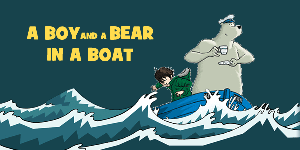When people ask me “What’s a GIF?” I often end up shouting/singing “It’s Peanut Butter Jelly TIME!”
Geeks like me will remember this adored GIF from about a hundred years ago, it did the rounds on sites like MySpace (ask your parents kids), Reddit and Tumblr.
GIFs are a series of still images compressed into a single file. The file then plays as a short animation made up of those single, still images. Think of a GIF as a high tech flip book.
The GIF format has been around since 1987, early users of the World Wide Web used the format to add movement and interest to web pages. GIFs were often used on pages to display errors, buttons or if a page was under construction.
As technology, web design and the internet evolved GIFs soon fell out of fashion, the use of GIFs on webpages soon became outdated. Social media would be the only saviour for this format. The GIF had to evolve from just a moving image to a medium for communicating feelings, moods and movements.
The Rebirth of the GIF Format
Users of Myspace and Tumblr started to use GIFs to reflect moods or make statements. GIFs were soon paired with everyday statements, questions and funny sayings. This type of post was often relatable and sharable.
GIFs are now used on nearly all social media platforms and are commonly used by marketers to help add a bit of humour and personality to campaigns. GIFs aren’t just for fun though; they can be used to promote products, increase brand awareness, as tutorials or to show your company’s culture.
Using GIFs at Nottinghamshire County Council
I decided to make a GIF to promote a children’s pop-up theatre play showing in Nottinghamshire libraries, ‘The Boy and a Bear in a Boat’.
The microsite we created for this play features a moving image. I wanted to recreate this in GIF format for our social media channels.
I used Photoshop Elements to create the GIF. First I created a new image, ensuring that the canvas was transparent. I then added the waves and the image of the boy and the bear. I wanted the GIF to move, so it looked like the characters were out at sea.
To do this I created multiple layers of the same image and moved each layer in a different direction. The end result was a single Photoshop file with multiple layers; each layer contained a slightly different image – like a flip book!
I then saved the file as a GIF and the result was a moving image – Success! The whole process took about 1 hour but with practice I could halve this.
Here is the result:
I used this GIF on Twitter and Facebook to help promote the upcoming play. A GIF works perfectly with this campaign as the whole idea of a children’s pop-up theatre is fun!
I have used the GIF twice on Twitter with good results. We gained more retweets when using this GIF compared to previous tweets using just an image.
Yesterday Twitter also introduced a new auto-play feature, this means GIFs and videos now play automatically when a user scrolls through their feed. This means more users should now see moving GIFs increasing the chance of improving engagement.
We are planning to continue creating and using GIFs on our social media channels. It can be a great way to use a backlog of images and can help add personality to campaigns.
Posted by Yasmin Newell, Digital Content Officer






The rebirth of the animated GIF. Nice article.
Your boy in a bear in a boat GIF is brilliant – a great way to make your image stand out more, without it becoming overbearing, as some GIFs can be. Thanks for sharing your method.
I’ve started to use GIFs again too in local government. I’ve done a couple of short ‘how to’ animated GIFs for the Bradford Council app, which you can see on our blog:
https://bradfordmdc.wordpress.com/2015/06/22/app-update-for-android-you-can-now-delete-all-alerts/
Thanks Albert – we’re very fond of our A Boy and A Bear in a Boat GIF. It’s certainly been a good addition to the ways we’re promoting the play.
We’ll check out your videos – really like the idea of using them for ‘how to’ content.
I’m not so sure about the use of auto-playing GIFs. Friends of mine report that repetitive moving images can trigger migraine headaches, or even be a risk for photo-sensitive epilepsy. So maybe they are best hidden behind something, or with a “play” button?
Hi KL,
Thanks for the feedback and is much appreciated 🙂
We do aim to meet user needs and undertake a range of different user testing techniques with different groups to make sure what we do is meeting individuals needs. We also try and adhere to published guidelines for all of our web properties.
Just read this and thought of this:
http://recode.net/2015/06/30/why-i-vote-gif/
Great article – thanks for sharing Andy!